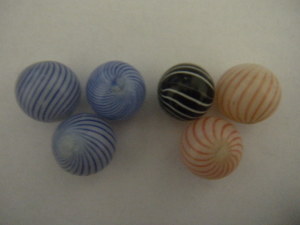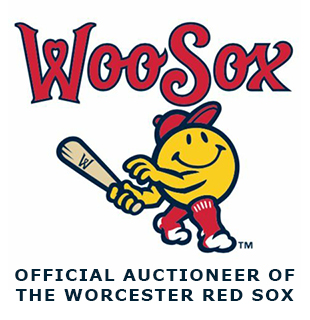Marbles existed in Ancient times but are still available in toy stores today. The Agricultural History Project states that marbles were found in the ashes of Pompeii and Ancient Egypt. The National Marble Museum notes that marbles were a popular gift during the Roman holiday of Saturnalia. The marble game of “nuts” was very popular with Roman children. Marbles were also used by Native American tribes.
Early marbles were made of clay. Samuel S. Dyke is credited with automating the process in an Akron, Ohio factory in 1884. The American Toy Marble Museum website states that this was the first time in history that many children could afford to buy a toy with their own money.
Glass makers in the area of Lauscha, Germany began producing the first glass marbles in the mid-1800’s. Handmade marbles continued to be made in Germany and were also produced in the United States and elsewhere as late as into the 1950’s.
Martin F. Christensen is credited with inventing a machine that would mass produce glass marbles in 1902. Horace Hill was an employee who started his own company called “Akro Agate” in 1911. By the 1920’s Akro Agate was the largest marble producer in the world.
Akro Agates are very collectible today. Boxed marbles can bring prices in the $100’s or even $1,000’s. Handmade marbles are rarer and typically worth more than machine made ones.
German swirl marbles are some of the most desirable. There are a wide variety including ribbon swirl, peppermint swirl, latticino swirl, caramel swirl, butterscotch swirl and others. Other popular handmade marble types include onionskins, rainbow, clambroth and sulphide.
Some handmade marbles have advertisements or picture comic characters. Other popular handmade marbles have colorful names like bumblebee, tiger, rainbow, Girl Scout and grasshopper.
If you have marbles, here are some things to keep in mind when you inspect them. Look for a pontil mark. The pontil mark is where the artisan broke the marble off from the glass rod. Sometimes the pontil mark is ground down. Condition is important to collectors. The size is also a consideration with larger examples typically being worth more than smaller ones.
I was appraising collectibles at an event several years ago. Someone related how they had bought a Chinese checkers game at a yard sale for $2. They told the owner that there were no marbles with the board. The owner handed them a bag of marbles for them to take with the game. They were hand blown swirls from the 1930’s. The 15 marbles were worth $50 each, totaling $750.
If you want to pick up something unique for the Holidays or just want a break from shopping, stop by the estate sale that we will be running in Worcester at 5 Cuba Rd. on Saturday December 6th and Sunday December 7th. See www.centralmassauctions.com for details.
Contact us at: Wayne Tuiskula Auctioneer/Appraiser Central Mass Auctions for Antique Auctions, Estate Sales and Appraisal Services www.centralmassauctions.com (508-612- 6111), info@centralmassauctions.com





